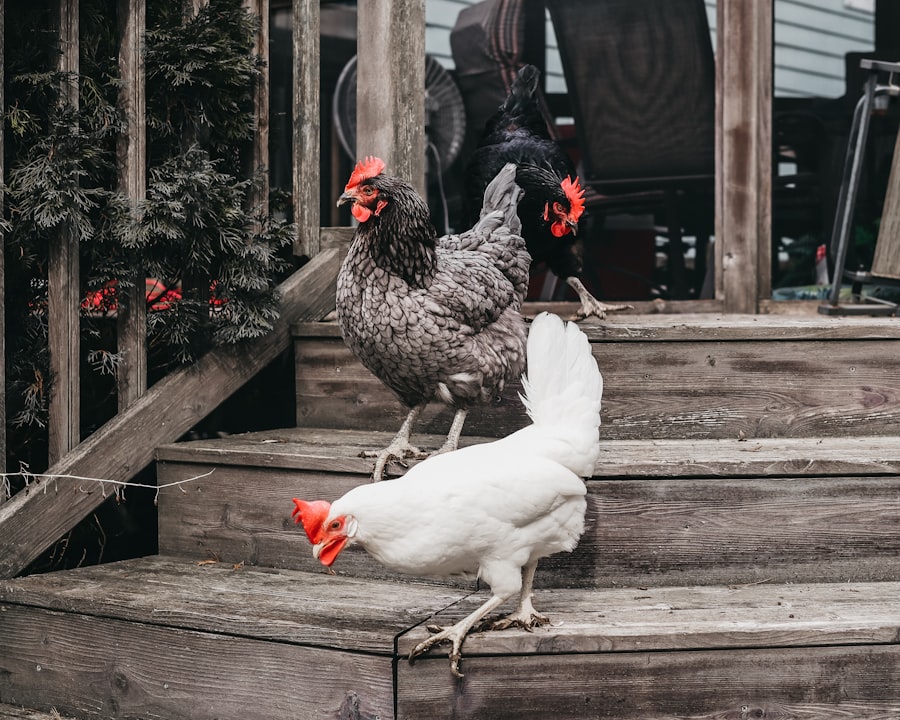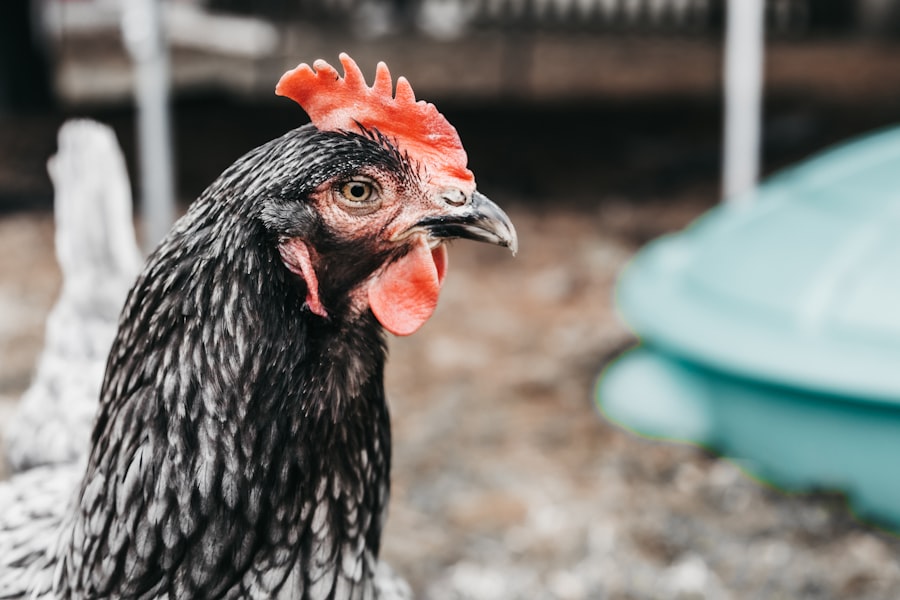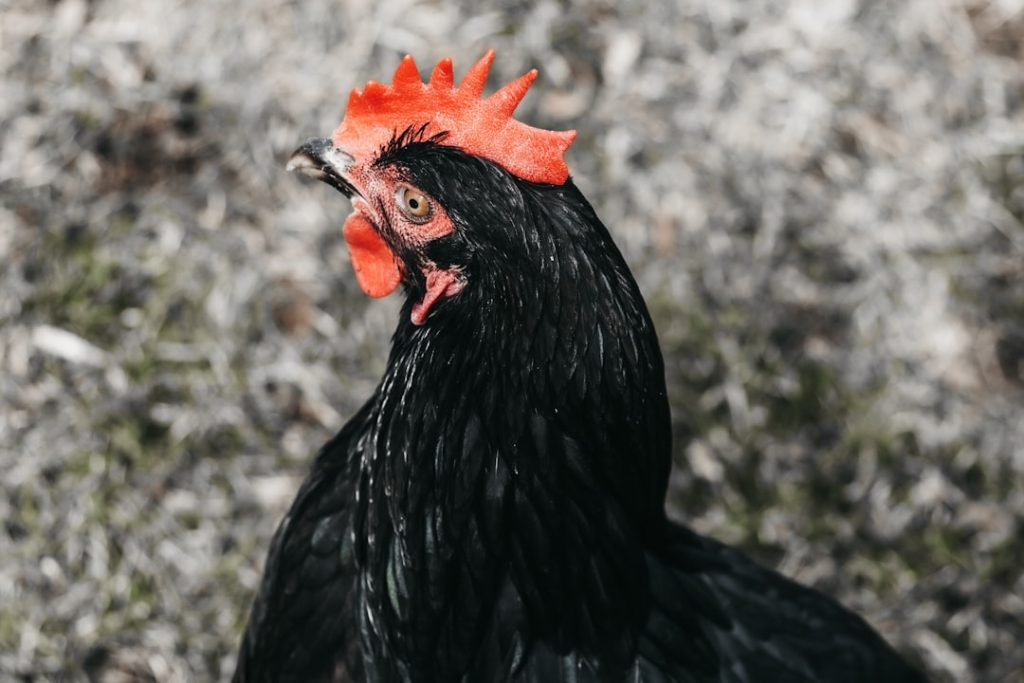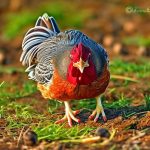Salmonella is a genus of bacteria that can cause infections in humans and animals, including chickens. These bacteria commonly reside in the intestinal tracts of poultry and can be transmitted to humans through the consumption of contaminated eggs or meat. Understanding the prevalence and potential risks associated with Salmonella in chickens is essential for poultry farmers and individuals involved in the handling and consumption of poultry products.
Salmonella infections in chickens can manifest as various symptoms, including diarrhea, lethargy, and reduced egg production. In severe cases, the infection may lead to mortality. Infected chickens can also shed the bacteria through their feces, potentially contaminating the environment and facilitating the spread to other birds within the flock.
This highlights the importance of vigilant monitoring and health management practices for poultry farmers to prevent the proliferation of Salmonella within their flocks.
Table of Contents
Key Takeaways
- Salmonella is a common bacteria found in chickens that can cause foodborne illness in humans.
- Proper hygiene practices, such as handwashing and cleaning of equipment, are essential in preventing Salmonella contamination.
- A clean and sanitary living environment for chickens can help reduce the risk of Salmonella contamination.
- Regular monitoring and management of chicken health can help prevent the spread of Salmonella.
- Safe handling and cooking of eggs is crucial in preventing Salmonella infection in humans.
Implementing Proper Hygiene Practices
Implementing Proper Hygiene Practices
One of the most effective ways to prevent Salmonella contamination in chickens is by implementing proper hygiene practices on the farm. This includes maintaining clean and sanitized facilities, regularly cleaning and disinfecting equipment, and practicing good personal hygiene when handling chickens and their eggs. Farmers should ensure that all staff members are trained in proper hygiene protocols to minimize the risk of Salmonella contamination.
Handwashing and Protective Clothing
Proper handwashing is crucial when working with chickens, as it can help prevent the spread of bacteria from the birds to humans. Using hand sanitizers and wearing protective clothing, such as gloves and aprons, can also help reduce the risk of Salmonella transmission. Additionally, farmers should establish designated areas for handling chickens and eggs to prevent cross-contamination with other farm activities.
Reducing the Risk of Salmonella Contamination
By implementing these hygiene practices, farmers can significantly reduce the risk of Salmonella contamination in their poultry operations.
Providing a Clean and Sanitary Living Environment

Creating a clean and sanitary living environment for chickens is essential for preventing Salmonella contamination. This includes regularly cleaning and disinfecting chicken coops, nesting boxes, and feeding and watering equipment. Farmers should also ensure that the chicken litter is properly managed to minimize bacterial growth and reduce the risk of Salmonella contamination.
Proper ventilation and airflow within the chicken coop can also help maintain a healthy environment for the birds and reduce the risk of bacterial infections. Farmers should regularly inspect the facilities for any signs of mold, mildew, or pest infestations, as these can contribute to the spread of Salmonella. By providing a clean and sanitary living environment for their chickens, farmers can help minimize the risk of Salmonella contamination and promote the overall health and well-being of their flock.
Monitoring and Managing Chicken Health
Regular monitoring and management of chicken health are essential for preventing Salmonella contamination on the farm. Farmers should be vigilant in observing their flock for any signs of illness or abnormal behavior, as these can be indicators of a potential Salmonella infection. It is important to promptly isolate any sick birds and seek veterinary guidance to prevent the spread of the bacteria within the flock.
Implementing a vaccination program for chickens can also help reduce the risk of Salmonella infection. Farmers should work closely with their veterinarians to develop a vaccination schedule that is tailored to the specific needs of their flock. Additionally, providing a balanced diet and access to clean water can help support the overall health and immune function of the chickens, reducing their susceptibility to Salmonella infection.
By monitoring and managing chicken health proactively, farmers can help prevent Salmonella contamination and promote a healthy and productive flock.
Ensuring Safe Handling and Cooking of Eggs
Ensuring safe handling and cooking of eggs is crucial for preventing Salmonella contamination in humans. Farmers should educate consumers about the importance of properly handling and cooking eggs to minimize the risk of foodborne illness. This includes washing hands before and after handling eggs, storing eggs in the refrigerator, and cooking them thoroughly before consumption.
Consumers should be advised to avoid consuming raw or undercooked eggs, as these can harbor Salmonella bacteria. Properly cooking eggs until both the yolk and white are firm can help kill any potential bacteria present in the eggs. Additionally, farmers should provide clear labeling on their egg cartons to inform consumers about safe handling and cooking practices.
By ensuring safe handling and cooking of eggs, farmers can help reduce the risk of Salmonella contamination in the food supply chain.
Seeking Veterinary Guidance and Regular Check-ups

Developing a Comprehensive Health Management Plan
This may include regular health screenings, diagnostic testing for Salmonella, and implementing preventive measures such as vaccination programs.
Biosecurity Measures to Prevent Salmonella Contamination
Veterinarians can also provide valuable guidance on biosecurity measures to prevent the introduction and spread of Salmonella on the farm. This may include recommendations for quarantine protocols, visitor restrictions, and pest control measures to minimize the risk of bacterial contamination.
Proactive Flock Health Management
By seeking veterinary guidance and scheduling regular check-ups for their chickens, farmers can proactively manage their flock’s health and reduce the risk of Salmonella contamination.
Educating and Training Staff and Family Members
Educating and training staff and family members about Salmonella prevention is crucial for maintaining a safe and healthy poultry operation. Farmers should provide comprehensive training on proper hygiene practices, biosecurity measures, and safe handling of chickens and eggs. This may include regular training sessions, informational materials, and hands-on demonstrations to ensure that all individuals involved in poultry operations are well-informed about Salmonella prevention.
Additionally, farmers should establish clear protocols for responding to potential Salmonella outbreaks on the farm. This may include guidelines for isolating sick birds, disinfecting facilities, and seeking veterinary guidance as needed. By educating and training staff and family members about Salmonella prevention, farmers can create a culture of awareness and responsibility that promotes a safe and healthy environment for both chickens and humans.
In conclusion, understanding Salmonella in chickens and implementing proper hygiene practices are essential for preventing bacterial contamination on poultry farms. Providing a clean living environment, monitoring chicken health, ensuring safe handling of eggs, seeking veterinary guidance, and educating staff are all critical components of a comprehensive Salmonella prevention strategy. By prioritizing these measures, farmers can minimize the risk of Salmonella contamination in their flocks and contribute to a safer food supply chain for consumers.
If you’re looking for ways to keep your chickens healthy and prevent the spread of salmonella, you may also be interested in learning about the importance of maintaining a clean and well-ventilated chicken coop. Check out this article on how to choose the right heater for your chicken coop to ensure that your chickens are comfortable and safe during colder months.
FAQs
What is salmonella and how is it transmitted?
Salmonella is a type of bacteria that can cause food poisoning in humans. It is commonly transmitted through the consumption of contaminated food, particularly poultry, eggs, and meat.
How can chickens contract salmonella?
Chickens can contract salmonella through exposure to contaminated food, water, or environments. They can also become carriers of the bacteria without showing any symptoms.
What are the symptoms of salmonella in chickens?
Symptoms of salmonella in chickens may include diarrhea, lethargy, decreased egg production, and in severe cases, death.
How can I prevent salmonella in chickens?
To prevent salmonella in chickens, it is important to practice good hygiene and sanitation in the coop and surrounding areas. This includes regularly cleaning and disinfecting the coop, providing clean water and feed, and practicing proper handwashing after handling chickens.
Can I get salmonella from my chickens?
Yes, humans can contract salmonella from chickens through direct contact with the birds, their droppings, or contaminated surfaces. It is important to take precautions when handling chickens and their eggs to prevent the spread of salmonella.
Meet Walter, the feathered-friend fanatic of Florida! Nestled in the sunshine state, Walter struts through life with his feathered companions, clucking his way to happiness. With a coop that’s fancier than a five-star hotel, he’s the Don Juan of the chicken world. When he’s not teaching his hens to do the cha-cha, you’ll find him in a heated debate with his prized rooster, Sir Clucks-a-Lot. Walter’s poultry passion is no yolk; he’s the sunny-side-up guy you never knew you needed in your flock of friends!








